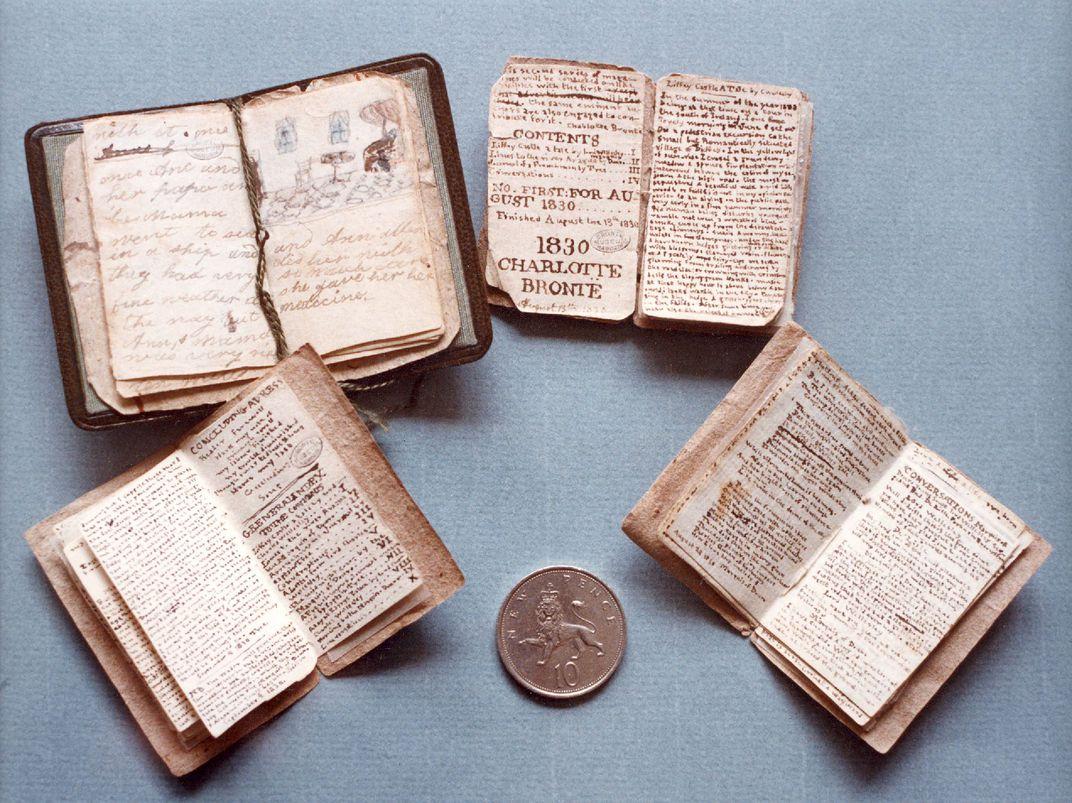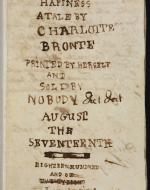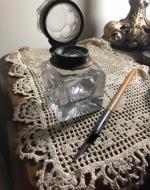Created by Laura Bussemaker on Tue, 11/03/2020 - 11:45
Description:
As children, the Brontës were very creatively driven. Because they lived in relative isolation from other children, they were close and invented entire worlds of their own with stories filled with colorful characters. Branwell and Charlotte created a land called Angria inhabited by dukes, princes, and kings. Emily and Anne, feeling excluded from the close relationship that their older silbings formed over their creation of Angria, broke off from their older siblings' world and created their own island of Gondal. This second world was also complete with the tales of its ruler, King Julius, and his love, Augusta.
Miniature books created by young Charlotte Brontë, ca. 1830, Brontë Parsonage Museum, Haworth, UK.
Even as children, the Brontës enjoyed writing, drawing inspiration from their imagined worlds well into their adult lives. Charlotte wrote entire miniature books chronicling the lives of her characters, and although Emily, Anne, and Branwell all created maps, poems, and stories, Charlotte's works remain most intact for us to see today.
Charlotte Brontë, "The Search After Happiness," 1829, Manuscript in The British Library.
In 1829, at age thirteen, Charlotte took the publishing of her hero's adventures into her own hands. In a handsewn miniature book of 15 pages, Charlotte recorded a short story set in an imaginary African kingdom called Glass Town. On the title page, Charlotte wrote, "A Search After Hapiness [sic] // A Tale by Charlotte Brontë // Printed by herself and sold by nobody." What follows is a carefully hand-written, minisculy printed account of Henry O'Donell's adventure to find contentment. The story follows him as he leaves his homeland where his sons reside and travels and lives for a number of years in a distant land with a new companion before becoming lonely and returning home by the wish of a magical Genii. The tale was inspired by an idol of hers, the Duke of Wellington, who also had two sons.
Page from "A Search After Happiness" by Charlotte Brontë, 1829, Manuscript in The British Library.
Victorian era pen and inkwell, from the Collection of Catherine J. Golden
As highly educated Victorian children, the Brontës wrote using nib ink pens such as the one included in the fourth image. However difficult we might consider writing with such instruments today, the Brontës had a lot of practice as they wrote their many poems and stories and illustrated their maps and portraits from a young age. Even so, these miniature books are even more impressive considering the way that Charlotte handlettered the pages of her stories as she wrote the text in imitation of print letters as opposed to her usual cursive handwriting.
(Source: https://www.bl.uk/collection-items/bront-juvenilia-the-search-after-happ...)





